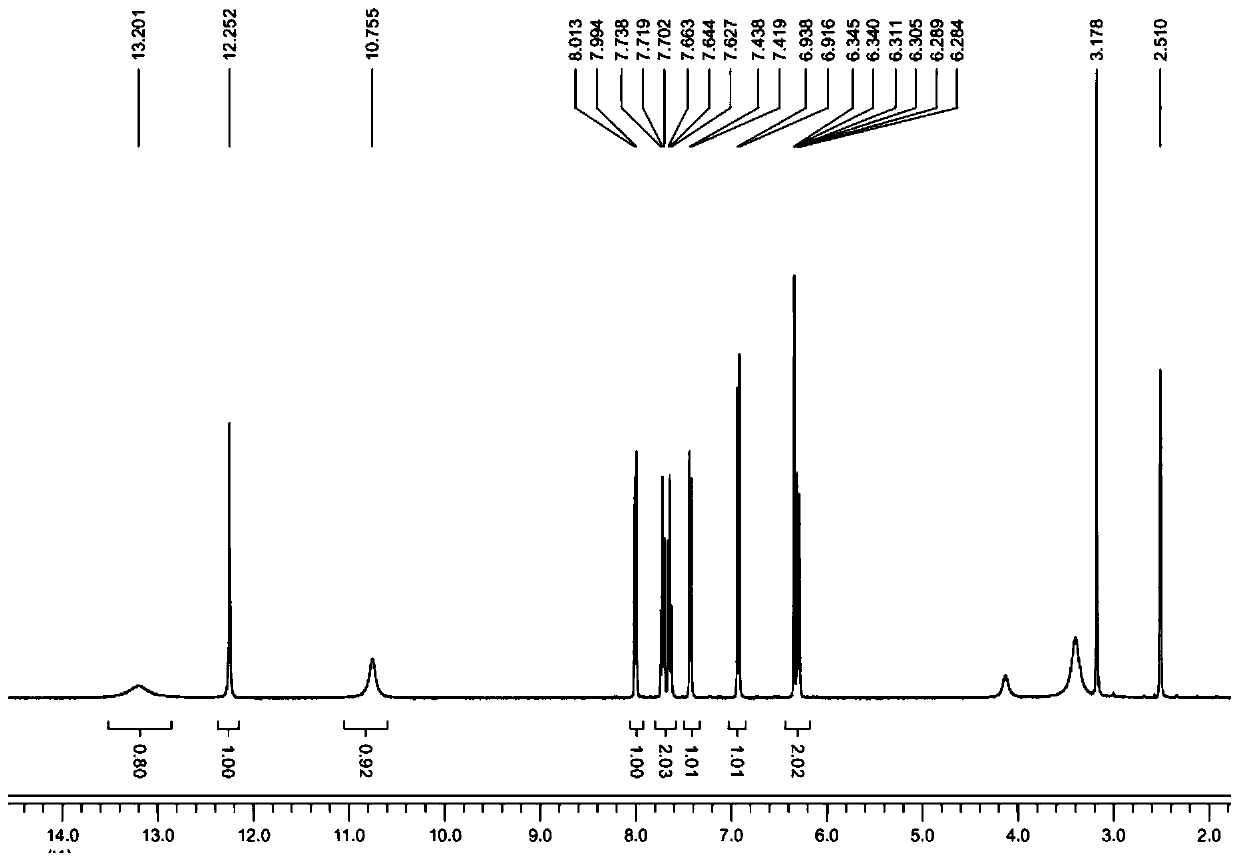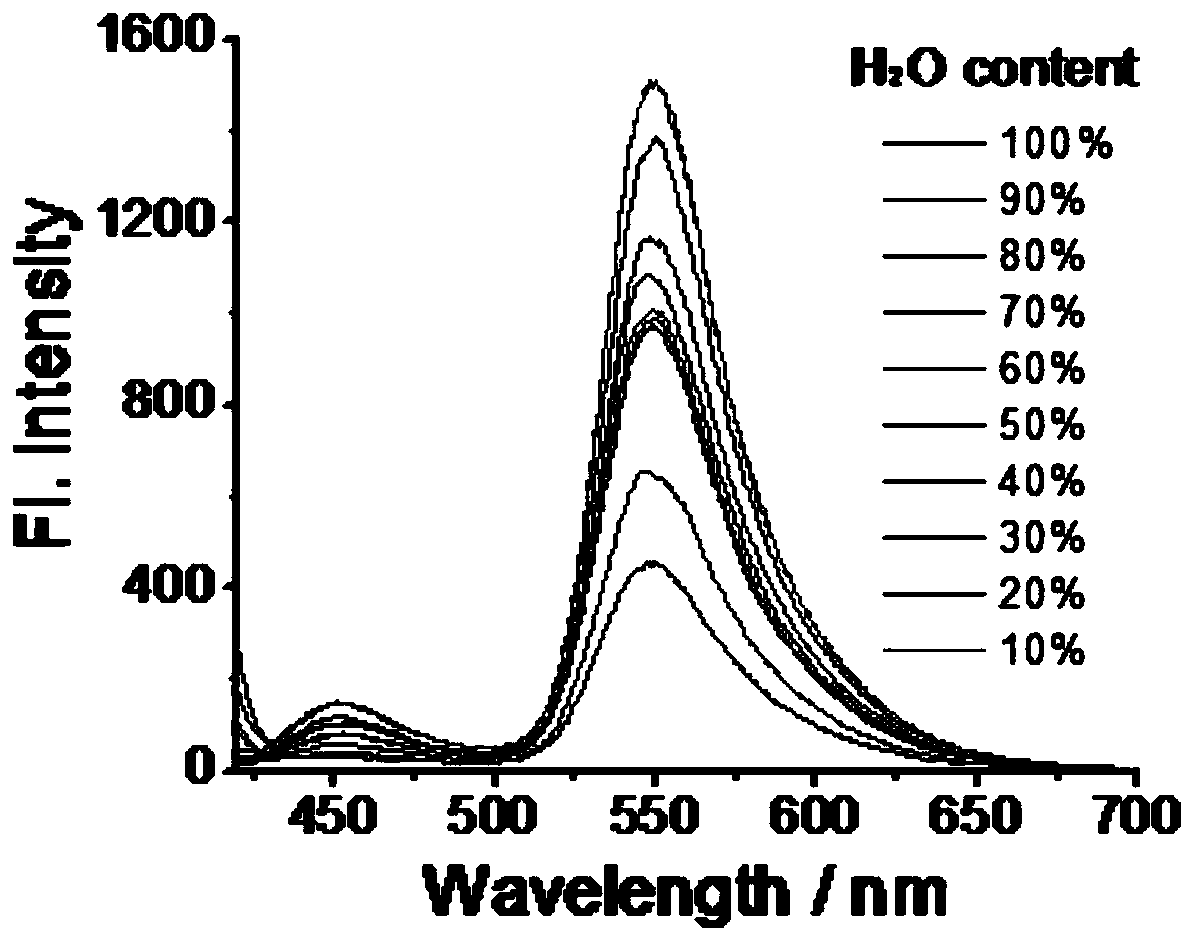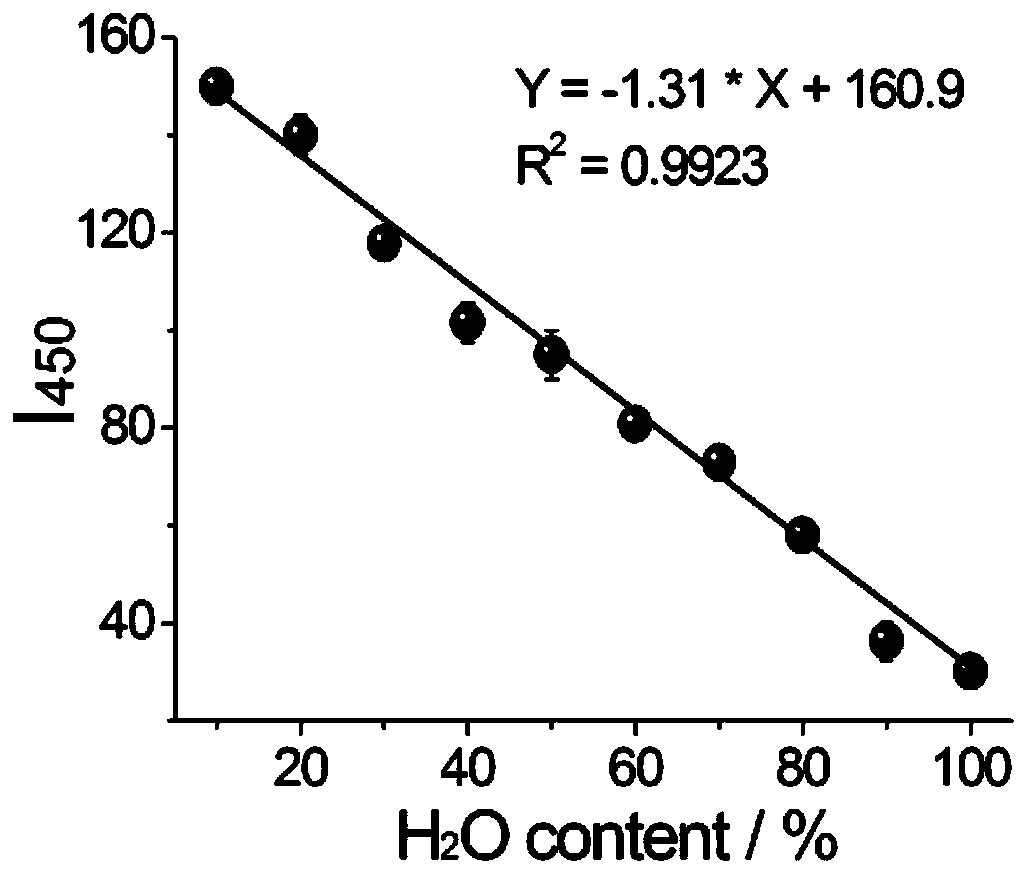Fluorescent probe for detecting content of water in heavy water and application of fluorescent probe
A technology of fluorescent probes and heavy water, applied in measuring devices, fluorescence/phosphorescence, luminescent materials, etc., can solve the problems of human harm, achieve the effects of low preparation cost, simple and easy synthesis process, and easy promotion
- Summary
- Abstract
- Description
- Claims
- Application Information
AI Technical Summary
Problems solved by technology
Method used
Image
Examples
Embodiment 1
[0023] Example 1 Synthesis of Fluorescent Probes
[0024]
[0025] Take compound 1 (80 mg, 0.2 mmol), 7-hydroxycoumarin (40 mg, 0.2 mmol), HOBT (13.5 mg, 0.1 mmol), EDC (78 mg, 0.4 mmol) in 4 mL DMF and at room temperature Stir for 10 minutes, then add 200 μL DIEA and continue stirring for 5 hours under nitrogen protection, then pass it through column chromatography, and change to CH 2 Cl 2 : CH 3 OH = 10:1 (v / v) for purification to obtain an orange-red fluorescent probe with a yield of 65%, 1 H NMR spectrum see figure 1 .
Embodiment 2
[0026] Example 2 Fluorescent detection of heavy water with different light water contents by fluorescent probe
[0027] Prepare in advance 5 mL of a 10 μM probe heavy solution in 0.33% DMSO containing 10% to 100% light water. Fluorescence detection is then performed (λ Ex = 400 nm); calculate the fluorescence intensity in each system; by analyzing the relationship between the fluorescence intensity at 450 nm and 550 nm and the light water content, evaluate the response performance of the probe to the light water content (see figure 2 , image 3 with Figure 4 ). figure 2 , image 3 with Figure 4 It shows that with the increase of light water content, the fluorescence intensity ratio I of the solution 450 and I 550 Gradually decreased, while light water content and fluorescence intensity showed a good linear relationship.
Embodiment 3
[0028] Example 3 Selectivity of fluorescent probes to different ions
[0029] Prepare 5 mL of 10 μM probe heavy aqueous solution containing 0.33% DMSO in advance, and then add 50 μL of CuSO with a concentration of 200 μM to the system 4 、Na 2 S, Na 2 SO 3 、H 2 o 2 , Cys, GSH, NaNO 2 Aqueous solutions of small molecules. Fluorescence detection is then performed (λ Ex = 400 nm); calculate the fluorescence intensity I in each system 550 and I 440 ; Assess the interference of the different substances on the fluorescent probe solution (see Figure 5 ). As can be seen from the figure, of course adding CuSO to the probe solution 4 、Na 2 For small molecules such as S, the fluorescence of the solution basically does not change.
PUM
 Login to View More
Login to View More Abstract
Description
Claims
Application Information
 Login to View More
Login to View More - R&D
- Intellectual Property
- Life Sciences
- Materials
- Tech Scout
- Unparalleled Data Quality
- Higher Quality Content
- 60% Fewer Hallucinations
Browse by: Latest US Patents, China's latest patents, Technical Efficacy Thesaurus, Application Domain, Technology Topic, Popular Technical Reports.
© 2025 PatSnap. All rights reserved.Legal|Privacy policy|Modern Slavery Act Transparency Statement|Sitemap|About US| Contact US: help@patsnap.com



